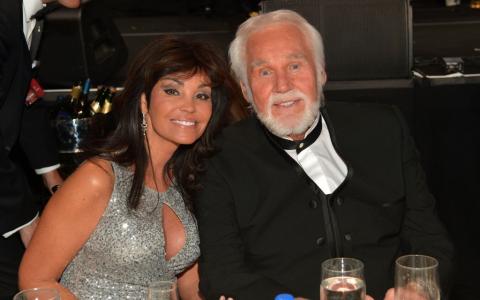
A half century of fame doesn’t overcome the classic sequence risk of old age. But a $250 million career goes on long after death.
The spread of “you’ve got to know when to fold ‘em” references over the weekend is a testament to how pervasive Kenny Rogers was in the late 1970s and early 1980s.
He was a hit machine, racking up an estimated $250 million through extensive touring, TV appearances and endless radio play.
But reading between the lines of the last few years, I am not convinced he left a lot of that money behind.
He was an avid entrepreneur, helping to build a 425-restaurant chain in the 1990s. That should have been his retirement plan.
Unfortunately, the restaurants have vanished except in Asia, where the viral epidemic stopped all casual commerce. If the chain recovers at all, it will be a shadow of its former glory.
No licensing fees for use of the name. No revenue for Kenny’s heirs. The question is what other assets the family has to draw on.
Lots of records, not so much property
Kenny Rogers didn’t write a lot of his greatest hits. His heirs get a little cash when any of his recordings are played or purchased online, but that’s just a trickle of income.
Of course in an era of convulsive nostalgia and universal quarantine, bored people might download the songs in the millions. We’ll just have to watch the numbers.
But even millions of downloads and streams only add up to the death benefit on one decent life insurance policy. As the nostalgia fades, the streaming money drops fast.
Providing for the family then becomes a matter of amassing enough wealth in life to support their lifestyles. He left a wife (his fifth) and five adult kids behind.
The number of marriages is a challenge too. Kenny paid out $60 million to settle Divorce No. 4 in 1993. That was easily half his fortune then.
It’s also sometime after his commercial peak. All the earning power from his huge hits, all the TV and movies was tied up in that number.
After that, he got back to work on a smaller scale like many of us do. He married again and raised his two youngest kids.
He kept touring and recording. But health became an issue and he decided the 2017 tour would be his last. Then he had to cancel that one as well.
Touring is where the real money is today. If you aren’t packing stadiums, you’re living on virtual peanuts in the modern music industry.
I think that’s why Kenny was a net seller of real estate in recent years. The ranches rarely met his asking price, but at least they could be liquidated when they no longer gave him much delight.
The restaurant chain ultimately expanded too fast and imploded, selling out of bankruptcy for a measly $1 million and change. The Asian conglomerate that owns the remaining outlets took his face off the logo a decade ago.
What’s left is whatever cash he set aside in more conventional investment accounts, working real estate and other retirement assets.
How much is that? We don’t know. It’s probably enough to keep his widow comfortable for the rest of her life. Although that’s another challenge with these late marriages: he died at 81. She’s 57.
In theory, she needs those assets to last another 40 years to achieve Monte Carlo comfort. By that point, Kenny would have been far beyond the statistical longevity limit.
I hope he had a lot of life insurance. We’ll find out. And as for the kids, their dad was The Gambler.
They've got that. Anything else is extra.



